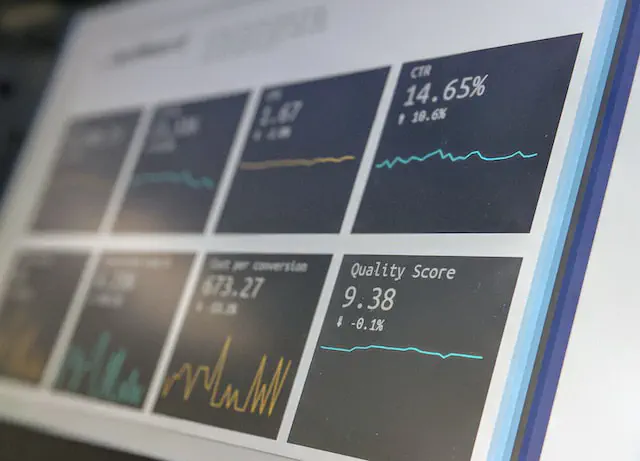Using Mathematical Models to Predict Stock Prices: An Analysis for Improved Investment Strategies
 Image credit: Unsplash
Image credit: UnsplashThe stock market is one of the most important financial markets, where investors and traders make crucial decisions to buy and sell shares of companies for profit. Predicting stock prices accurately can be challenging due to the complexity and volatility of the market. Therefore, mathematical models have been developed to predict stock prices, allowing investors and traders to make more informed decisions, provide valuable insights and guidance to investors and traders for better decision-making and profit maximization. This study aims to analyze the effectiveness of mathematical models in predicting stock prices and provide insights for improved investment strategies. Through the analysis of historical data and the application of various mathematical models, such as time series analysis, regression analysis, and neural networks.
Geometric Brownian Motion (GBM)
$$ \Large dS_t = \mu S_t dt + \sigma S_t dW_t $$Geometric Brownian Motion (GBM) is a mathematical model that describes the random movement of a stock price over time. This model is used in finance and economics to simulate the behavior of asset prices, assuming a constant expected return and volatility of returns over time. GBM is a type of stochastic process, where the logarithm of the stock price follows a Brownian motion with drift. This model has practical applications in option pricing, risk management, and portfolio optimization. However, GBM has limitations, such as assuming constant volatility and normally distributed returns. Despite its limitations, GBM remains a widely used tool in financial modeling and analysis.
Random Walk Model
$$ z_t = \delta + z_{t-1} + e_t, t=1,2\ldots $$Random Walk Model is a simple mathematical model used to describe the movement of a variable over time, such as stock prices or exchange rates. The model assumes that the variable’s future value is equal to its current value plus a random error term. This error term represents the unpredictable nature of the variable’s movement and is assumed to follow a random distribution. The Random Walk Model is widely used in finance and economics, particularly in the study of asset prices, and it has been shown to accurately describe the behavior of stock prices over short periods of time. However, the model has limitations, particularly in predicting long-term trends, as it assumes that the future value of the variable is entirely determined by its past values and random shocks. Despite these limitations, the Random Walk Model remains an important tool in financial modeling and analysis.
Technical Analysis
Technical analysis is a method used to analyze financial markets and securities by examining historical price and volume data. The main premise of technical analysis is that past price and volume trends can be used to predict future price movements. Technical analysts use a variety of tools and techniques to identify patterns and trends in price and volume data, including charting and trend lines. Technical analysis is commonly used in stock trading and is based on the idea that market prices are determined by the interaction of supply and demand. Proponents of technical analysis argue that it provides valuable insights into market trends and can help traders make profitable investment decisions. However, critics of technical analysis point out that it is often based on subjective interpretations of price data and may be unreliable in predicting future market movements. Despite these criticisms, technical analysis remains a popular and widely used tool in financial analysis and trading.
Fundamental Analysis
Fundamental analysis is a method used to evaluate the intrinsic value of a security or asset by examining its underlying economic and financial factors. This approach focuses on analyzing a company’s financial statements, industry trends, and macroeconomic conditions to determine the underlying value of the company’s stock. Fundamental analysis is based on the idea that a company’s stock price should reflect its underlying value, and that discrepancies between the two can provide opportunities for profitable trades. Fundamental analysts typically examine a company’s earnings, revenue, cash flow, and other financial metrics to evaluate its financial health and future prospects. They also look at broader economic and industry trends to identify potential opportunities and risks. Proponents of fundamental analysis argue that it provides a more comprehensive and objective approach to investment analysis than technical analysis. However, critics point out that fundamental analysis can be time-consuming and may not always accurately reflect market trends and sentiment. Despite these criticisms, fundamental analysis remains a popular and widely used tool in financial analysis and investment management.
Machine Learning
Please refer to this page for more information and resources.
Econometric Model
Please refer to this page for more information and resources.
Time Series Analysis
Please refer to this page for more information and resources.
References:
“Predicting Stock Prices Using Technical Analysis and Machine Learning” by Svetlana Borovkova and Juan-Jose Ganuza - a research paper that discusses the use of mathematical models in predicting stock prices, including machine learning algorithms.
“A Comparative Study of Machine Learning Algorithms for Stock Price Prediction” by Jinjian Yang, et al. - a research paper that compares the performance of different machine learning algorithms in predicting stock prices, including neural networks and support vector machines.
“Stock Price Prediction Using ARIMA Model” by Xinyang Wang and Yunjie Wu - a research paper that explores the use of time series analysis and ARIMA models in predicting stock prices.
“Financial Modeling Using Excel and VBA” by Chandan Sengupta - a book that provides a practical guide to building financial models in Excel, including models for predicting stock prices.
“Quantitative Trading: How to Build Your Own Algorithmic Trading Business” by Ernest P. Chan - a book that discusses the use of mathematical models and algorithms in quantitative trading, including strategies for predicting stock prices.